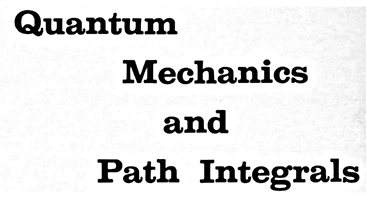
Problem 8-7
It is believed that neutral particles of spin zero (like neutral pions) can, when free, be represented by a field with a lagrangian
where is some constant. Show that this field has quantized states corresponding to waves , where the energy of exitation is
If is considered as the momentum of each excitation the energy is
This is the relativistic formula for the energy of a particle of momentum and mass .
(
Note ) : For small it is approximately the rest energy plus the kinetic energy ,
( 解答 ) 前述したブログ記事の式 (2.16) から, 実数の場 の運動方程式すなわち「オイラー=ラグランジュ方程式」は次となる:
問題文中の式 (8-133) から, このときのラグランジアン密度 は,
従って,
式 (3) の各々を式 (1) に代入すると, 次の微分方程式が得られる:
結果式の両辺を で割り算すると, これは Klein-Gordon 方程式になっている:
定数 は,「長さの次元」を持っている.また, 演算子 は「
D’Alembertian」と呼ばれている. J.J.Sakurai によれば, この式 (5) は「1920年代の半ばに, 自由粒子に対する “非相対論的な” Schrödinger方程式に対応する”相対論的な”波動方程式の候補として, O.Klein と W.Gordon だけでなく E. Schorödinger も考えた式である」.式 (5) を質量 の自由粒子に関する相対論的なエネルギー=運動量の関係:
と比較すると, 初等的な量子化の規則,
によって両者が対応していることは明らかである.
そこで, 次の “非相対論的な” Schrödinger方程式に対する初等的な自由粒子解
が, 式 (4) 即ち式 (5) を満たしているかを実際に代入して確認してみよう.まず,
これらを式 (4) に代入すると,
この 内はゼロとなるべきであるから,
自由粒子の運動量についての式 を用いれば, この結果は自由粒子の「相対論的なエネルギー=運動量の関係式」(6) に一致する.従って,「場 は, 波動 に相当する量子状態 を有している」ことが示された.


